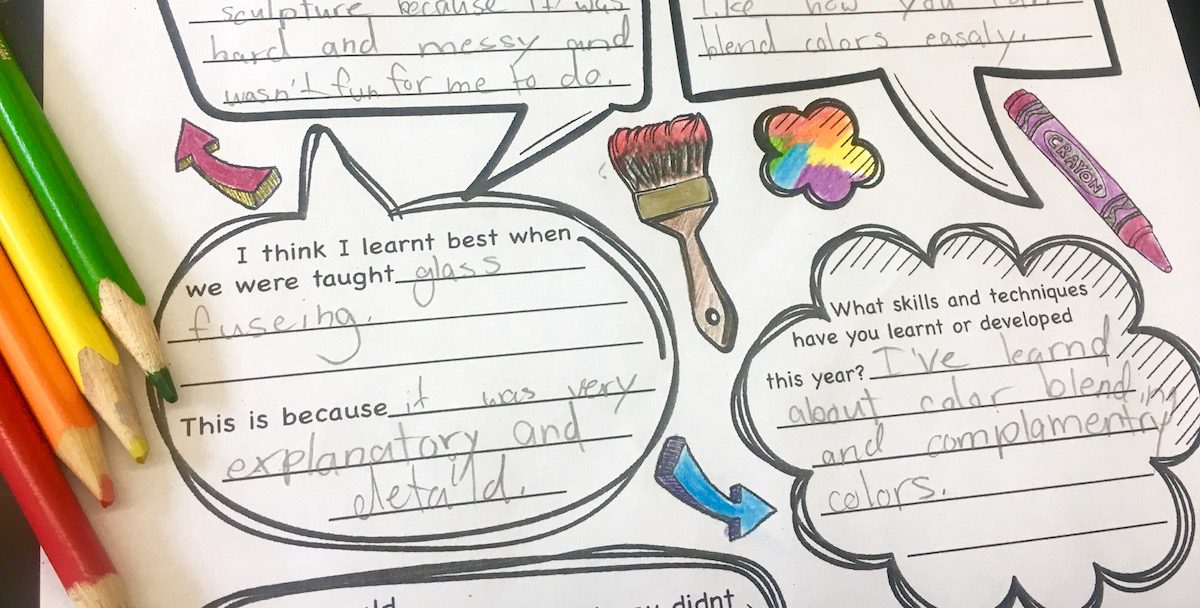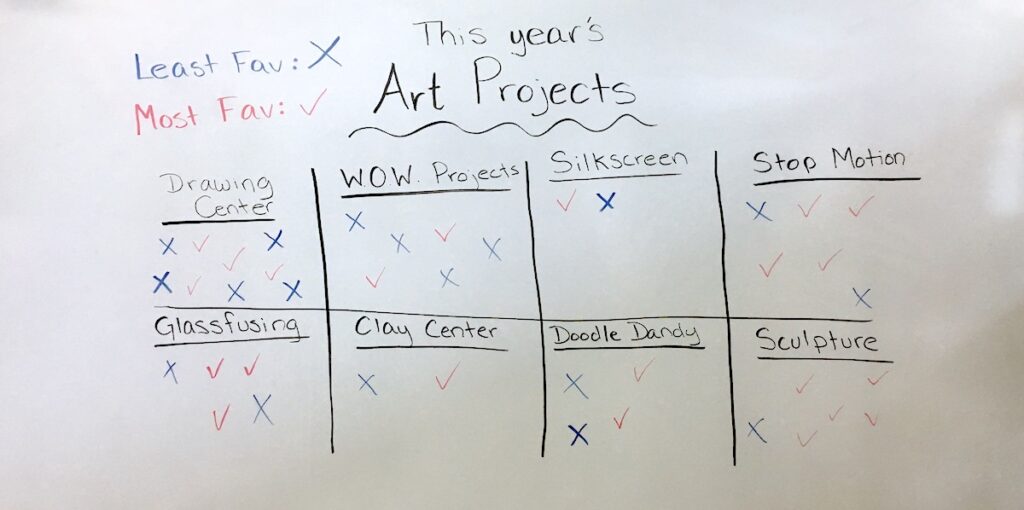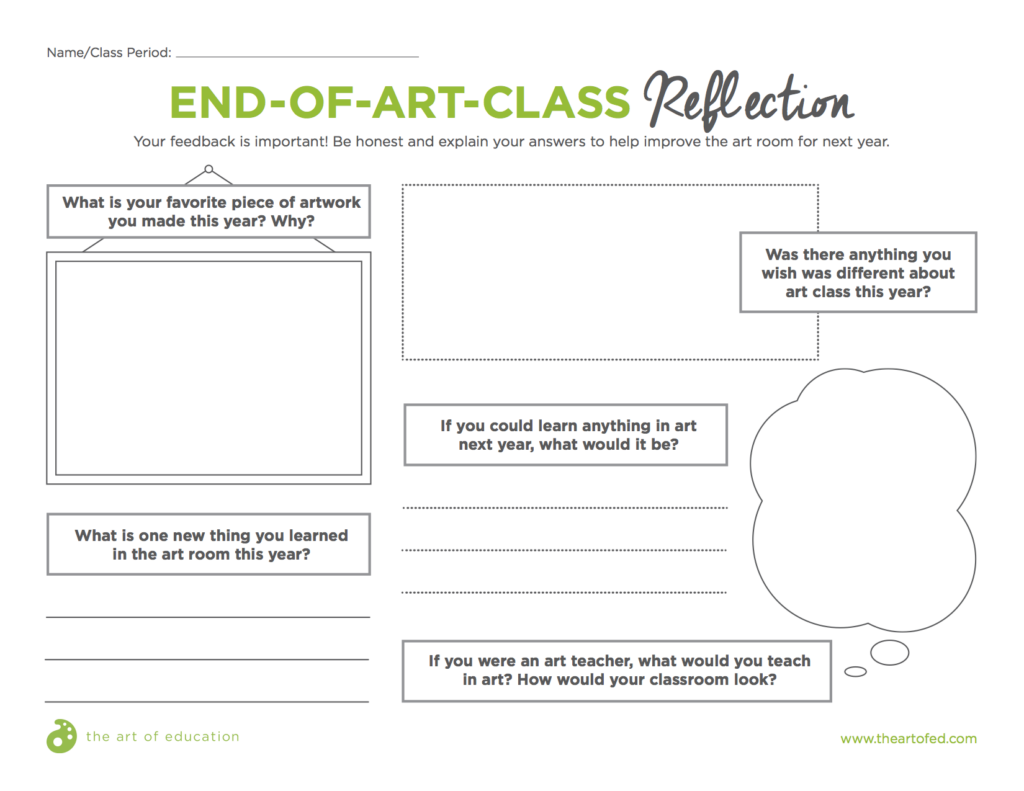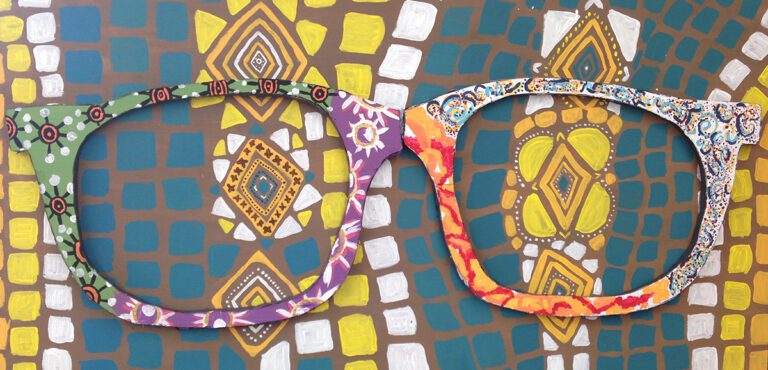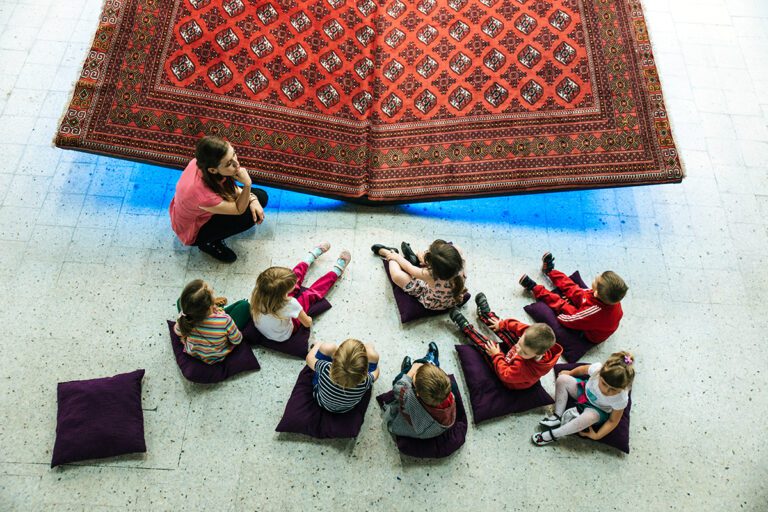Elementary art students often LOVE art class. It’s one place they are free to be creative, independent, and messy. It’s important to remember despite the age of our students, their honest feedback about art class is important and useful. Authentic feedback from even the youngest students can be an informative tool to help us grow as teachers. Asking for student feedback is also a great way to let students know their voices are heard. In addition, it’s a perfect way to collect evidence and data to share with administrators.
Here are 4 ways to elicit honest feedback from your elementary students.
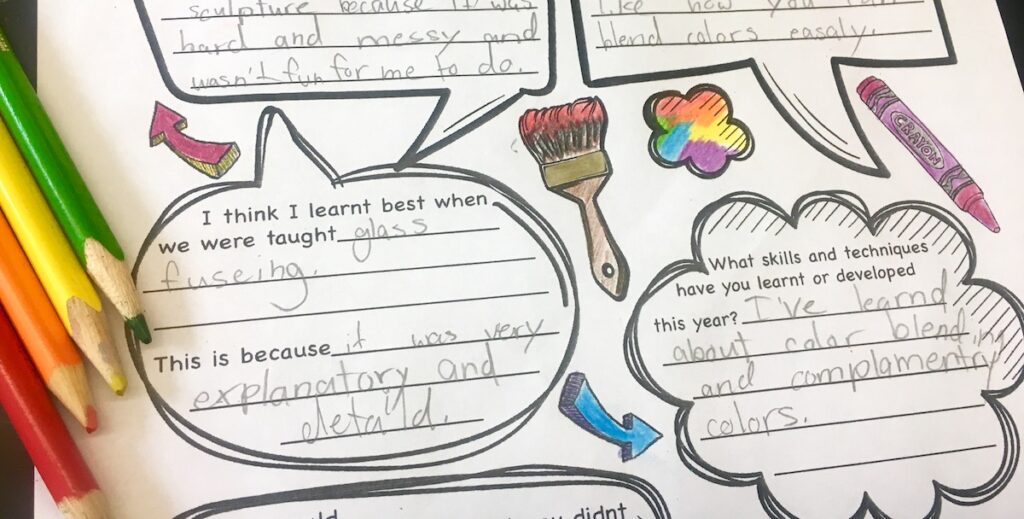
1. Facilitate a Think, Pair, Share Discussion
Think, Pair, Share activities are a great way to get your kids thinking and talking before they raise their hand to answer a question. This is a great way for younger students and English Language Learners to gain confidence and practice their language skills. Don’t expect your students to know what a good Think, Pair, Share looks like, model it for them first. Here’s how it works.
Think
Pose a reflective question such as, “What did you like best about this project? Why?” or, “What center are you enjoying the most right now? Why?” Give students a minute or two to think silently. It’s a good idea to write the question on the board or repeat it verbally for students who need repetition.
Pair
After giving students time to think, ask them to turn to the person next to them and pair up to discuss their ideas. This will give them a little time to work through their thoughts out loud before sharing with the larger group.
Share
Last, have students share! They can present alone or with their partner for support. Keep a list of their shared ideas on your whiteboard. This way, you can reflect on the group’s thoughts at the end of class if you have time.
The more you use Think, Pair, Share with your students, the more successful they will be. Use the Think, Pair, Share technique on its own or to enhance student understanding before trying the reflection methods below!
2. Give a Simple Survey
Using a survey is an easy way to collect data. You can administer surveys at the beginning of the year to see what students are interested in, in the middle of the year to gauge how things are going, or at the end of the year to see what changes you might need to make in the future.
Here’s one example of how to conduct a simple survey:
- Ask students to help you make a list of something. It could be projects or centers they’ve done, artists they’ve studied, techniques they’ve learned, etc…
- After the list is compiled, simply ask students to mark their favorites. This could be done with sticky notes or colored magnets on a whiteboard or using a digital survey tool like Plickers.

- Leave time to tally the results as a class. Have a discussion about why they think some things were more popular than others. Ask students to offer suggestions about how to improve based on the feedback.
You could even make this into a STEAM or math integration activity by pairing up with a math teacher and creating a large-scale graph or chart on a bulletin board. You could highlight one class or compile the data of the whole school. Make sure to document this process and share it as evidence with your administrator!
3. Have Students Fill Out an Art Reflection Sheet
A reflection sheet is a great way to collect honest feedback from students who are old enough to write. You can provide a place for a name, but allow students to fill them out anonymously if they’d like. You can create reflection sheets for specific projects or centers, at certain checkpoints throughout the year, or as a no-mess, zero-prep, last-day activity!
Download the two-sided End-of-Art-Class Reflection Sheet below to get started!
Download Now!4. Storytelling
Pose a storytelling question to students to spark their imaginations. For instance, “If I grew up to be an art teacher, I would…” and invite them to tell a short story or draw a picture about how they would run their art class.
Before asking them to imagine their own art room, explain they might choose to share something they wish art could have, something they already love about art or something they’ve always wanted to try. Then have students close their eyes and guide them to envision their classroom: What are your students making? Do you have anything on your walls? What is special about your art classroom?
Make sure to let students include pie-in-the-sky ideas like, “My art classroom would have a roller coaster in it.” These ideas will give you just as much insight as more traditional answers. For example, the previous comment might spark reflection such as:
- Do I incorporate enough movement for my kinesthetic learners?
- Could I try adding a 3D roller coaster design project into my curriculum next year?
- What could I do in my classroom that would really surprise my students?
Share these thoughts with your students to let them know you hear them and their voices are important.
It’s important to create a space for your youngest students’ voices in the art room. Community building activities are essential when our students only visit us an hour a week. Not only will reflections help your students feel heard, but you will be able to constantly improve to meet your students’ unique needs!
How do you use student feedback to enhance your teaching practice?
Do you use student reflections in your classroom?
Magazine articles and podcasts are opinions of professional education contributors and do not necessarily represent the position of the Art of Education University (AOEU) or its academic offerings. Contributors use terms in the way they are most often talked about in the scope of their educational experiences.
